Felicity Goes Online
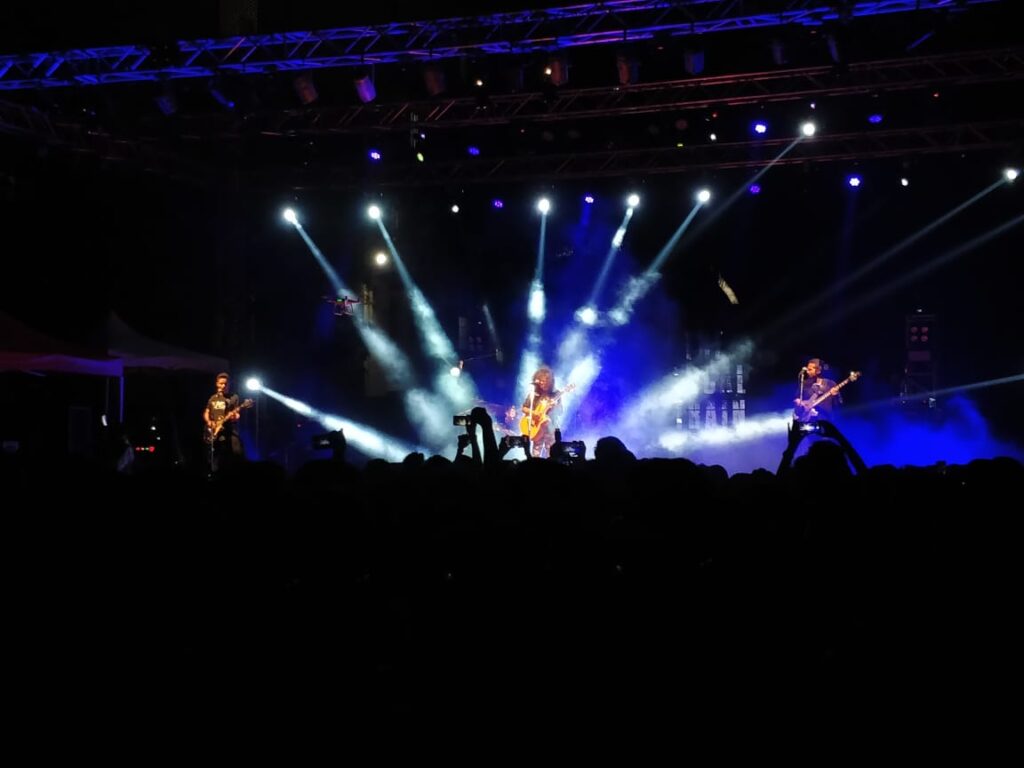
It’s not just a few days of fun; it’s a word for a zillion emotions and timeless memories. It comes each year to bind us all together and open the doors to a gamut of new experiences. “Felicity,” IIIT Hyderabad’s annual techno-cultural fest, undoubtedly remains close to the heart of every IIITian. Unfortunately, the pandemic has shoved us into our homes, eliminating the chances of any on-campus festival. This situation calls for an entirely online Felicity but wait, what should be the way forward? What is going to be different? Are some things even relevant now? Only time will tell, but, for now, let’s investigate what an online Felicity entails and hopefully uncover some possible answers to these questions.
A walk down memory lane
The time is 2 am. You and your mates are reluctantly walking back from an adrenaline and caffeine-fueled night of dance rehearsals for the much-awaited flash mob that is due to happen tonight. Even though you’re famished and have an 8:30 am class the next day, what you and your friends wouldn’t give to go back to Himalaya, to laugh at each other as you go through the dance routine (although the dance crew coordinators didn’t seem to find the act amusing). But it’s all worth it. You feel great; these moments will add to the little things of your college experience that you’ll cherish for years to come. In fact, you feel a little heavy because, with today, the flash mob event will be over, and your day will return to the usual norm of classes, assignments, PT, JC repeat. As you retreat to your room, you realise that there is no time to fret about a dull day as preparations for the Felicity weekend commence soon. That means nights watching on as the Kalakshetra events give rise to vibrant wall paintings and majestic lighting that bring the campus to life. That means nights ending up in DLF with a plate full of tawa bonda after an evening filled with rehearsals. If only this were possible in 2021…
New year, new us, new Felicity??
Coming off the back of a challenging, both mentally and physically, 2020, the new year has brought about with it an air of expectations. Sadly, despite the relaxation of lockdowns around most places across the globe, students continue to be immured to their houses. This sudden withdrawal of social interaction alongside a rigorous academic schedule left many feeling exhausted and craving campus interactions.
So, when the news of an online Summer ‘21 semester surfaced, a poignant wave swept across the students of IIIT-H as it meant losing Felicity to the coronavirus pandemic. This was a lot to digest for the student community as the hustle and bustle of the Felicity weekend along with the arresting campus decorations would be irrelevant in an online Felicity. Ultimately, after being whittled down by a tiring online semester and being faced with the prospect of having to ‘reimagine’ Felicity, nobody ran for the post of the Felicity Coordinator this year.
Boldly, Shivaan Sehgal of UG3 stepped up to take on the Goliath task of organising a pretty much new festival with no proven format. A festival had to be completely reinvented to conform to the online theme of events. In the team-spirit of Felicity, multiple students offered to help out and we’re seeing new ideas that take advantage of the online platform, such as using Instagram’s reels feature to promote the event by caricaturing multiple student stereotypes when it comes to Felicity. Further, various clubs are exploring online counterparts to traditionally physical events – in an attempt to make the online Felicity more traditional.
But traditional in what sense? Historically, major Felicity Events take place at the Felicity Ground. It is the common place that brings us together as a community. In a recent interview with Shivaan, we learned that instead of the usual big 3 events that are held at Felicity ground – Inaugurals on day 1, DJ Night on day 2, and a live band on day 3, the Felicity website would be the cornerstone for the events occurring throughout the week. In order to not let a participant be overwhelmed by the various meet links for multiple events, the website has a handy feature where the various links are added to a personalized calendar. The Campus Treasure Hunt, usually conducted by placing easter eggs around campus could see an online version where the clues are planted across the IIIT-H network instead of around campus. He also hinted at making alternate arrangements to get ‘fachhe’ to participate in events as pummeling down the doors to the juniors rooms is a privilege that is lost 😉
There is no doubt that organizing an online event that will do justice to the typical one would be no walk in the park. While we may not be able to quantify the success of this year’s Felicity in terms of turn out and headline features, we can appraise it on how well it brings us together as a campus and provides us respite from a strenuous semester. Let’s explore a few possibilities and challenges that would have to be addressed by the Felicity Coordinator and crew in this trying time.
The “Live” feeling
As we dig deeper into the question of what a “live” fest encloses and whether the “live” feeling is at all possible in an online version, it might be interesting to note how we have been taking so many things for granted all along.
Felicity demands loads of collaborative activity and coordination. This paves the way to meet new people, enjoy with friends, socialize and just have a lot of fun in the process. It is not uncommon to casually make new friends while practicing, painting, or even standing together. Finding events through conversations is just as commonplace, with Felicity enveloping almost all small talks. From walking around tardily on the campus with your buddies to watching a crowd-filled event live, not to mention succumbing to the tempting overpriced stalls, all take our minds on a strangely exhilarating ride.
So, the real question lies in whether bringing all this online is a viable option. The answer is a yes and a no. Neither can the spontaneity of conversations nor the circumstances be replicated, but still, there are undoubtedly more than one ways to interact with people online. Platforms for holding simple meetings and conferences like Zoom or Teams may do a decent job in holding fest events as well. However, virtual digital event platforms like Airmeet, Gather.town, etc., might be considered plausible options in order to provide a better user experience. We explore platform requirements later in more detail. Furthermore, considering the monotony due to Felicity remaining out of direct view, a way to bring in a “live” Felicity component to our doorsteps might be to distribute the Felicity t-shirts before the official fest kicks off. An engaging online presence may do the rest.
How are things different now?
What is relevant or not?
With the new format, many classic Felicity activities are either not feasible or simply not logical. For instance, “Kalakshetra”, the student body that typically takes the responsibility of making the decorations and props for the events, won’t be relevant, at least not in the form we’re all used to perceiving it as. The whole stage set up, food trucks, and stalls also lose their relevance this time. In the performances, live crowd demanding events like DJ night and concerts won’t be effective in an online fest, thus questioning their need altogether. However, competitions, hackathons, dance, music, drama, stand-up comedy, etc., can still be decently pulled off through online shows and events.
Wall Painting, another Felicity staple cannot happen this year. On the bright side, the Art Society and Programming club have moved the essence of wall painting online through “The Wall“, where students place a pixel every 5 seconds on a pixelated canvas to fill it up as they let their minds run wild over art, ideas and expressions. We’re eager to see what this unveils!
Doing things online: “felicity” or “distress”
Adding on to the limitations on the types of events, new challenges come with shifting not only the events but also the associated activities online like the meetings, and rehearsals. These might often demand innovative and practical solutions. As the concept of social interactions turns alien and the campus remains out of sight for more than ever anticipated, finding motivation for events, especially a social event, becomes a herculean task as well. Let us take a look at some clear issues that we are facing or might face later.
Theme and Production
Keeping in mind that the face of an online fest might be the only thing in people’s preview, an appealing theme might play a key role in settling the vibe, this year’s theme ‘Campus Reloaded’ being a fine fit for the same. The same holds for the need to have a strong online presence through websites, the Felicity landing page for instance, social media, promotional content, and other infrastructure. This year’s Felicity website is sure to play a defining role in how the fest proceeds, as mentioned earlier.
When it comes to enhancing the production value of any online event, we typically think of high-quality filming and recording of sessions, but for an online college fest, those are constrained by the limited equipment available at home. However, engaging graphics, neat editing, smooth transitions between announcements and performances, and a suitable platform choice can help boost the production quality.
Live vs. pre-recorded
The aforementioned “live” feeling doesn’t stay bound to only campus activities but rolls down to the official festival as well. Whether it’s the dance to bang-on beats, the mellifluous tunes or the loud cheers, the ambience is enough to draw anyone into moments of pure bliss and exuberance.
However, letting in a lot of audio from the audience for cross-talk and cheering or holding synced live dance and music performances in an online scenario with imminent lagging issues might turn out to be utterly infeasible.
Nevertheless, there remains a bright side to pre-recorded performances as it makes room for a lot of creativity through video editing. Live streaming pre-recorded content with open live chat has already been used as a way around in recent club events like Quarantine dances by the Dance Club and Music Club’s Unplugged 2020. Apart from that, virtual rooms and chats might prove useful in ensuring smooth and lively audience interaction.
Exploring Platform requirements
Audience engagement is the key to any event, in-person or virtual. Special attention needs to be put to engage the audience in a virtual event since participants can easily log off and do something else when bored, something very predictable in a monotonous screen sharing of Microsoft Teams events.
Hence, it is essential to integrate attendee engagement features like polls for questionnaires and mini-games, live chat, reactions. A cool feature to near a more real experience may be to allow socializing over small groups of people through virtual tables and rooms. Most of these features are delivered well by the digital event platform Airmeet, an option that is being considered for many of the Felicity events.
Youtube’s live stream feature was explored by the Music Club for their signature Monsoon Semester event: “Unplugged.” as well as by the Dance club for streaming of pre-recorded dance performances. This platform brings us the convenience of editing things offline and preventing the technical glitches known to plague live sessions.
Discord brings to the table the unique concept of servers. Each of the clubs at IIIT has an active Discord community with well-organized channels that promote interactions. With the option to live stream, role-based access, and bots, Discord seems like a very attractive place to hold interactive events like quizzes, something recently done by the quiz club.
Online Rehearsals
While the show of performances brings its concerns, holding rehearsals online might prove to be a completely different ball game. Taking the whole process online not only limits space and effective communication but also the duration of concurrent practice. Giving access to pre-recorded choreography within dance groups and focusing on individual practice might cater to the needs to an extent.
Feasible duration of events
People dozing off during a Felicity event is the last thing anyone would want. Consequently, the question arises for how long we can expect people to remain engaged in an event on their computer screen. Indeed a 5-hour typical Felicity show is a big no., thanks to the screen fatigue. Around 1.5 to 2-hour segments seem to be a sensible bracket if coupled with a gripping sequence of events across the 7 days of the festival. That brings with it concerns like optimizing for least event incoherence while maintaining the hype even across the bits and pieces of the same event. However, the extended timeline helps to make up for the shorter duration of events, thus maintaining the total “runtime” of Felicity.
How much does Finance matter?
A virtual event does away with a lot of expenses associated with an offline event, including costs of setting up the stage, equipment rentals, hospitality, etc. With most of the events going virtual, we might be able to consider reaching out to more potential speakers and performers but bringing them in still costs a pretty penny. Other expenses may include arranging for goodies, prizes, coupons, etc.
It is interesting to note that this year Felicity has two comedians, one more than the usual. Considering that a live band or DJ doesn’t seem practical, this may pay off quite well. On a related note, Felicity has already secured three big sponsors this year, which wouldn’t be remarkable if this wasn’t an online festival in a raging pandemic.
How others have done it
Over the course of the past year we’ve seen multiple events go online and all of the clubs at IIIT-H have successfully conducted events over the past semester. While none of these events are upto the scale of Felicity, we look at other flagship events that persevered through this phase and what adaptations they made to keep the event as engrossing as it would have been with a live audience.
Apart from the events for which a live audience accounts for a significant amount of revenue (such as concerts), most events were deferred to later in the year and strict protocols were effectuated. Notable events that fall into this category are the IPL and the NBA. Award shows such as the AMAs and VMAs included pre recorded performances which gave the chance for artists to try things out during a performance that they couldn’t do indoors with a crowd, rooftop, firework-filled performances just to name a couple. This kept the viewers on their toes as they were always excited to see ways in which one artist could visually out-perform another (@TheDanceCrew, we’re watching you). Launch Events too pounced on the opportunity presented by not having a live audience to go bonkers with mesmerising videography and camera angles. However, the most notable college fest that went online last year is IIT-B’s renouned Mood Indigo. The entire event was hosted as a virtual reality experience, an approach that hadn’t been explored before.
While next level videography or arranging for a firework filled inaugural may be a little far fetched for Felicity, we can only hope that clubs most affected will take this as an opportunity to try something new and overcome the obstacles faced by remote participation.
Wrapping up
Having juxtaposed the two versions, we find that though online Felicity does necessitate some conditions, it also yields new ways of doing things. It may be sheer tomfoolery to compromise this time’s unique experience by weighing one version against the other. Felicity has always revolved around the purpose of knitting a healthier, stronger community, being an outlet for social and cultural expression, and the rest is “lite.” Every year the whole Felicity team leaves no stone unturned to ensure we have an experience to harbor, this time being no exception to that. Whatever be the outcome, this Felicity will be one to remember and cherish for the story and the efforts put in by the student committee to overcome the challenges brought on by the pandemic.
Update (10:50PM 16/02/2020): An earlier version of this piece didn’t credit Programming Club for their work on ‘The Wall’. The article was updated to reflect this information.

 We Are So Cooked
We Are So Cooked  Qu’ils mangent de la grenouille! (Let Them Eat Frogs!)
Qu’ils mangent de la grenouille! (Let Them Eat Frogs!)  Tale of Two Cheenties
Tale of Two Cheenties  Peace of mind.
Peace of mind.  Boats and Valorant
Boats and Valorant 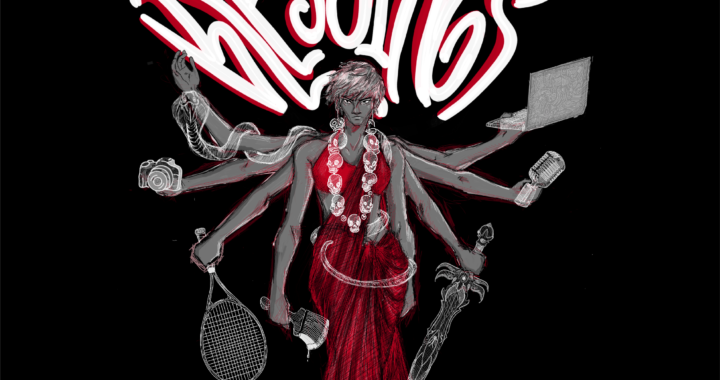 Blessings
Blessings 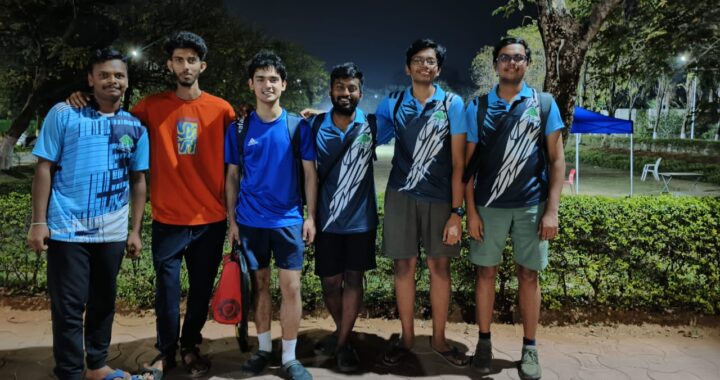 A perspective on sports in IIIT
A perspective on sports in IIIT 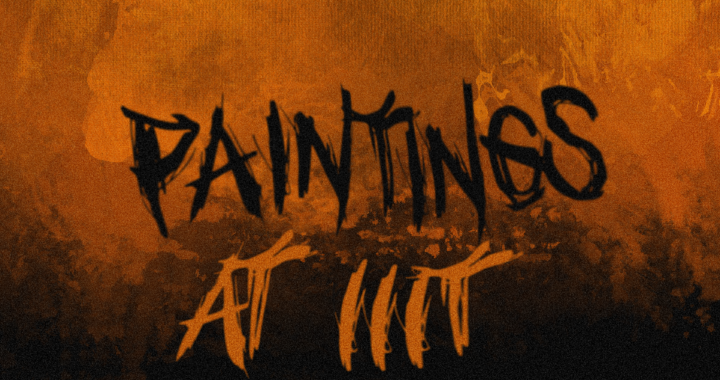 Paintings of IIIT
Paintings of IIIT 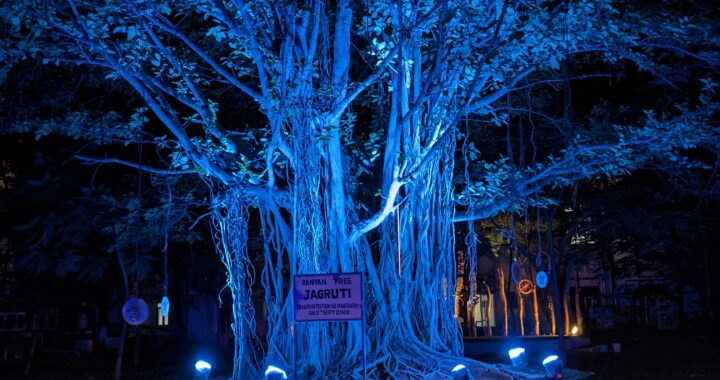 The Tale of Jagruti
The Tale of Jagruti  Cleaning up the Mess?
Cleaning up the Mess?